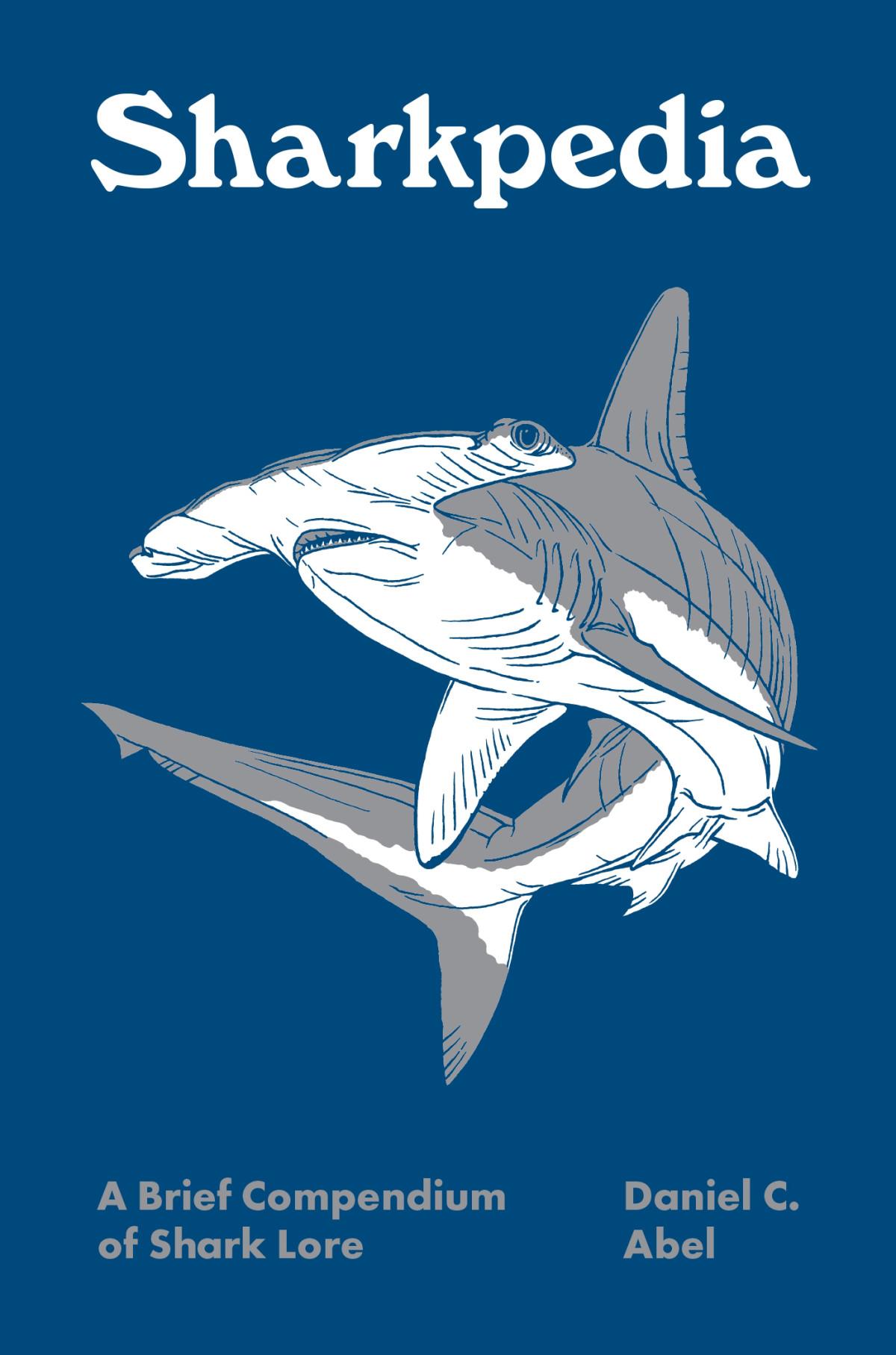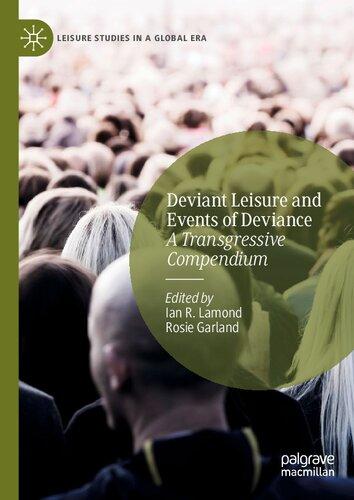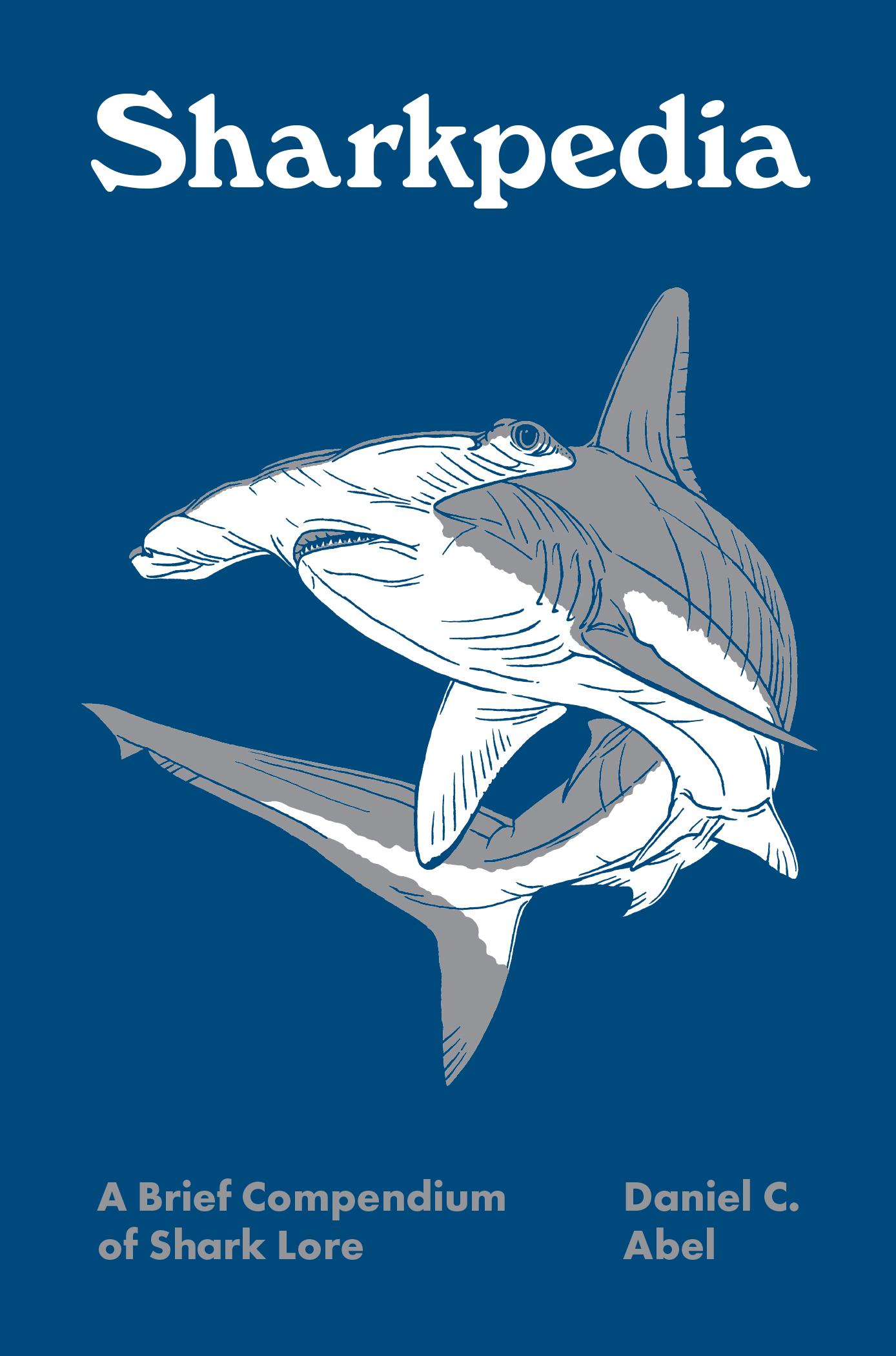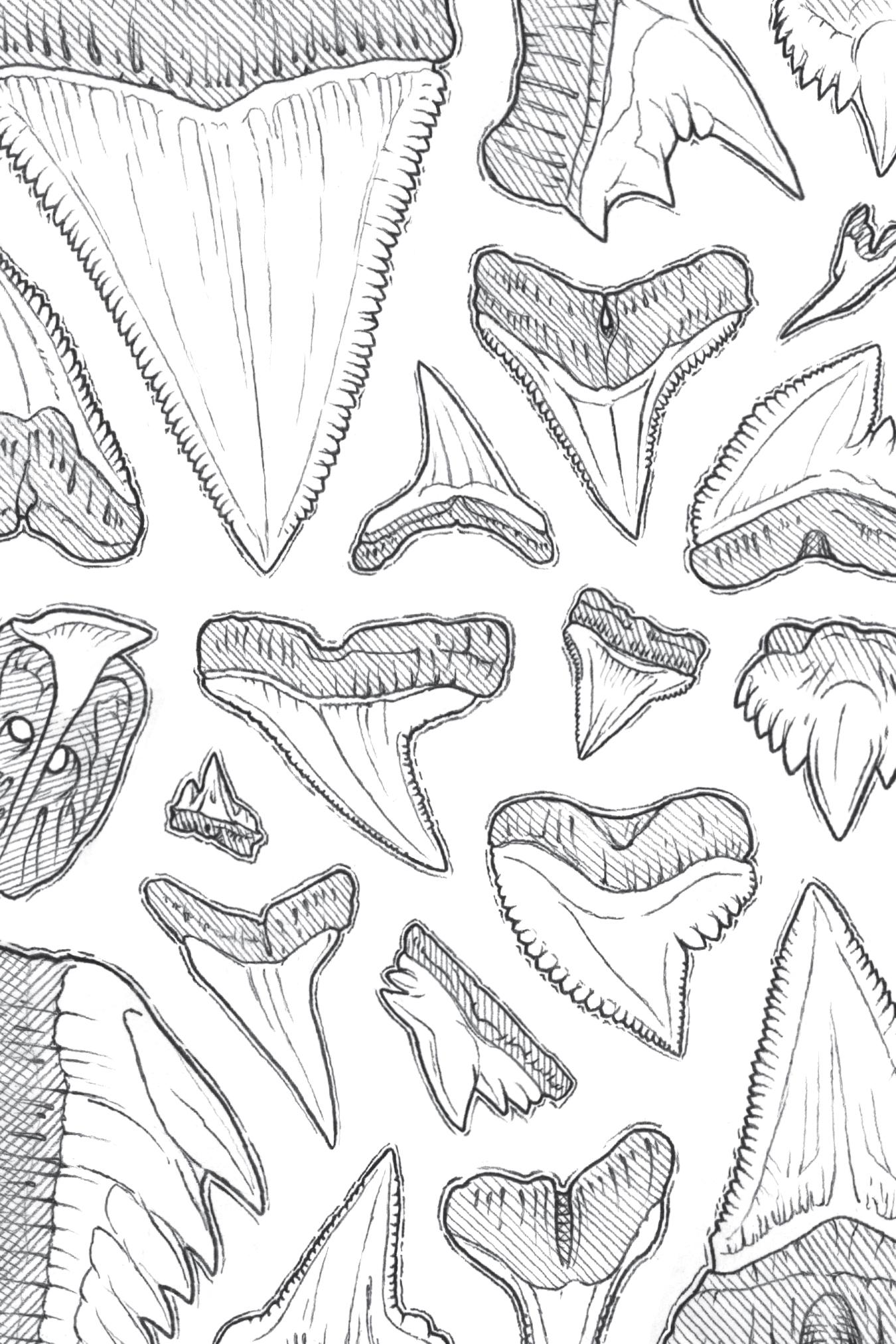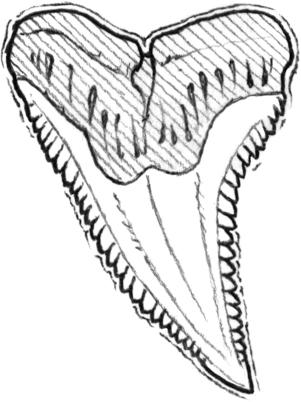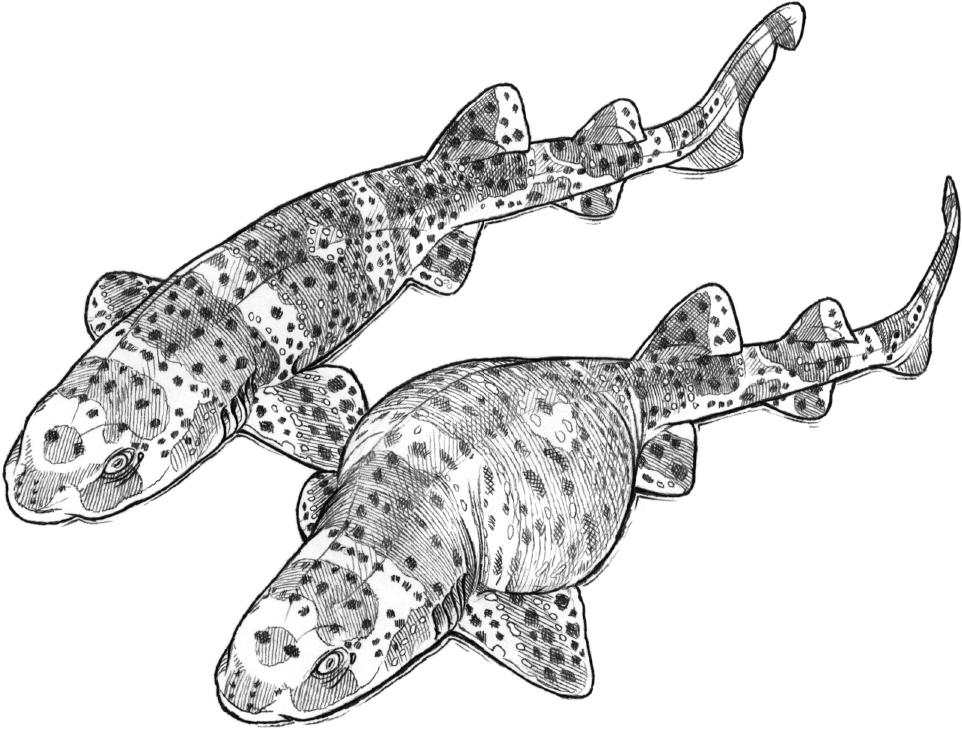Daniel C. Abel
PRINCETON UNIVERSITY PRESS
Princeton &Oxford
Illustrations by Marc Dando
Copyright © 2024 by Princeton University Press
Princeton University Press is committed to the protection of copyright and the intellectual property our authors entrust to us. Copyright promotes the progress and integrity of knowledge. Thank you for supporting free speech and the global exchange of ideas by purchasing an authorized edition of this book. If you wish to reproduce or distribute any part of it in any form, please obtain permission.
Requests for permission to reproduce material from this work should be sent to permissions@press.princeton.edu
Published by Princeton University Press
41 William Street, Princeton, New Jersey 08540
99 Banbury Road, Oxford OX2 6JX press.princeton.edu
All Rights Reserved
ISBN 9780691252612
ISBN (e-book) 9780691252629
Version 1.0
British Library Cataloging-in-Publication Data is available
Editorial: Robert Kirk and Megan Mendonça
Production Editorial: Mark Bellis
Text and Cover Design: Chris Ferrante
Production: Steve Sears
Publicity: Matthew Taylor and Caitlyn Robson
Copyeditor: Lachlan Brooks
Cover, endpaper, and text illustrations by Marc Dando
Preface v
Begin Reading 1
Acknowledgments 165
Useful References 167
Preface
What is it about sharks that galvanizes otherwise sane and reasonable people into polar extremes at the mere mention of the word? Can you name even one other group of animals whose devotees are matched by its detractors in both quantity and passion? Snakes might come close, but until there is an annually televised Snake Week as popular as Shark Week, I’ll not be convinced there are as many snake enthusiasts as shark celebrants, although sadly, many people react with similar negativity to both sharks and snakes. Interestingly, it’s very likely the same quality that divides people into shark lovers or haters their perceived prowess as outsized,
powerful predators. This perception, however, in reality applies only to a minority of shark species. While all sharks are indeed predators, even plankton-eating species like Basking and Whale Sharks, it might surprise you to learn that about two-thirds of the 541 or so (and growing) extant species of sharks are less than 3.3 ft (1 m) long. Also, more than half of all shark species live in the deep sea, defined as depths below 660 ft (200 m). Thus, streamlined, large gray beasts that live along shorelines or in the ocean’s surface waters are not typical sharks, but small, brown sharks that inhabit the deep sea—the most expansive ecosystem on the planet—are.
The public thus loves or hates (or perhaps fears) the least representative sharks, such as the White Shark, Tiger Shark, or Bull Shark, while they remain oblivious to the existence of the more common species, for example, the Gulper Shark, Horn Shark, or Cuban Dogfish. Such a distinction has its consequences, some of which are not innocuous. We care most about that which we know, and thus our ignorance of deep-sea and other lesser-known sharks, even if totally understandable, translates into less attention by the media, less regulation, and less research funding.
I saw my first live shark, a majestic creature, while fishing with my older brothers as a preteen. The emergence of a disproportionately large dorsal fin from the murky, sediment-soaked depths of Deewees Inlet, just north of Charleston, South Carolina, was the first evidence that indeed we had hooked a shark, which we mistakenly called a sand shark (the accepted common name is Sandbar Shark), at the time the most often encountered shark in local waters. I recall my emotions then as comingled fear, excitement, awe, curiosity, and reverence. To call the experience transformational is an understatement; it launched me into a life and career trajectory of valuing and respecting nature, wanting to learn and teach about it, and, ultimately, working to preserve it. And so began my love affair with sharks. I suspect I share these feelings with most readers of Sharkpedia.
Fifty-plus years later, Sandbar Sharks retain a very special place in my memory, and I still relive the same sentiments of that childhood experience whenever I see a live shark, especially while I’m
snorkeling. If I am successful in writing a book that retains the essence of these feelings, adds knowledge from the thoughtful research of generations of shark biologists (plus some of my own), promotes valuing and conserving sharks specifically and the natural world in general, and does so without either insulting your intelligence or being too professorial, then I will have achieved my goal in writing Sharkpedia. If this book motivates you to learn more about sharks (or nature) and take action to ensure that the biodiversity of sharks and all the natural world is maintained, then I will celebrate.
One final thought: how did I select the terms included here? Having recently published two books on sharks (Shark Biology and Conservation and The Lives of Sharks), both with noted shark biologist R. Dean Grubbs, as well as a chapter on sharks in Tooth and Claw: Top Predators of the World, with experts Robert Johnson and Sharon Gilman, I thought I had written everything that I knew and needed to communicate about sharks. Ha! My initial list of terms that I considered essential for Sharkpedia surpassed three hundred, many of them unmentioned in my previous works. I quickly came to the conclusion that identifying the perfect mixture of biology, conservation, history, lore, iconic species, overlooked species, salient terminology, contemporary references, major historical figures, and art and literary references was a fool’s errand; I could not write the shark equivalent of the Oxford English Dictionary (the Sharkford English Dictionary?). What survived the cutting room floor is a representative sampling of my initial list, one that serves as more of a launchpad for readers to explore their own curiosity than the definitive list of shark terms. It begins with “Adaptation” and ends with “Why Sharks Count,” a chronology of sorts that tracks my own evolution of interests as a shark biologist: be awed by what makes sharks so cool, then act to ensure that where there is historicalshark habitat, there are stillsharks.
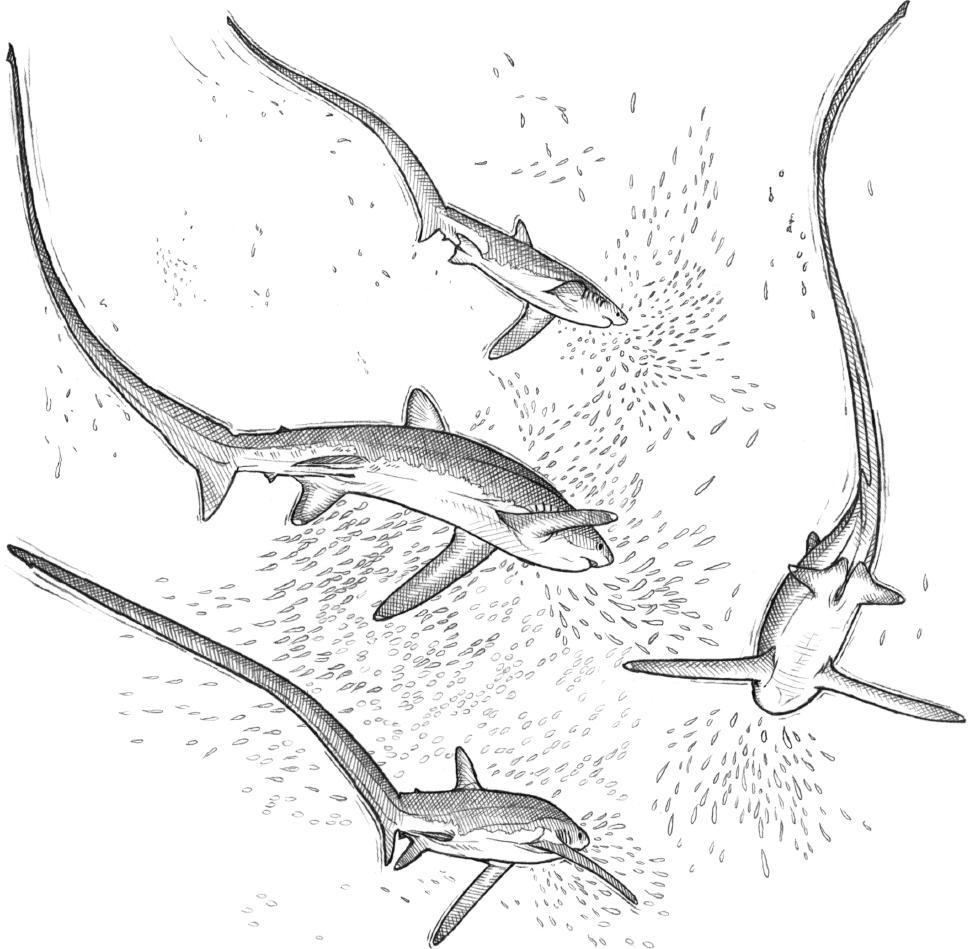
Adaptation
The nearly flawless shape of a Shortfin Mako that causes engineers and designers to drool … the graceful and gravity-defying aerobatics of a White Shark in mad pursuit of a Cape Fur Seal … the specialized, brawny jaws of the otherworldly Port Jackson Shark that enable it to crush hard-bodied prey … the Common Thresher’s uncommonly elongated upper caudal fin lobe that herds and stuns schooling sardines … the ampullae of Lorenzini on the head of a Small-spotted
Catshark (indeed, all sharks) that detect vanishingly small electrical currents to guide it to its prey these are only a handful of shark adaptations, features that enhance the ability of these marvelous beasts to survive and that are passed on to offspring, a genetic heritage that provides the basis for their success. Adaptations come in many varieties, including anatomical, behavioral, and physiological (internal function).
It is fitting that the first entry in this book is the term that for most of us embodies our fascination with sharks, especially those adaptations that make sharks exceptional predators. Sharks and other organisms of all stripes challenge us to first identify which features in fact represent adaptations and then to understand these adaptations, that is, to determine the specific problems they solve, and the mechanisms underlying them the ways the adaptations work. And, perhaps most meaningfully, to marvel at them. You will find all of the above adaptations, plus numerous others, in this book.
Age and Growth
Pencil scribbles on the door of a bedroom in my home re- cord the heights of my two children’s march from toddlers to teenagers—in other words, how tall they were at various ages. In essence, when ecologists refer to age and growth studies, they seek similar data, which are central to understanding a species’ ecology and managing that species.
Sharks are not quite as cooperative as my children were. Fortunately, in principle, determining age and growth rate in most sharks is fairly easy and relies, at least until newer methods are adopted, on the same idea that trees deposit hard tissue periodically. In sharks, the vertebral centra, the main structural elements of the backbone, are commonly used, especially in species of coastal and open ocean zones, which have more heavily calcified vertebrae, but less so in deep-sea sharks.
What have these studies taught us? First, sharks are long-lived. A White Shark may live to more than seventy years, and a Sandbar Shark about thirty-five. The longest-lived shark known to science is the Greenland Shark, whose maximum age has been estimated to be
at least 272 years (using a different method, carbon dating). One that old today would have been in its late twenties when the US Declaration of Independence was signed, and an octogenarian when Charles Darwin made landfall on the Galapagos Islands.
Sharks are also slow-growing, with comparatively late ages of maturity, and the age of maturity can also vary geographically. Maturity of Sandbar Sharks occurs at about sixteen, fifteen, and ten years for populations in the Indian Ocean, northwest Atlantic Ocean, and the Pacific Ocean off Hawaii, respectively, in all cases at lengths of less than about 5 ft (1.5 m).
So, that “trophy” 6.5 ft (2 m) Tiger Shark on the wall of the local sports bar may be only two years into its life, and six or seven years away from sexual maturity at a length of about 10 ft (3 m), all of which have been illuminated from age and growth studies.
Air Jaws
“Air Jaws” refers to the majestic aerial acrobatics of White Sharks, as well as an eponymous TV series on the Discovery Channel in the US. It would be difficult to replicate the utter, jaw-dropping incredulity of the first time we saw a 2,200 lb (1,000 kg) White Shark hurling itself out of the water at breakneck speed, at times completely rotating midair, in pursuit of a Cape Fur Seal (or a seal decoy) in False Bay, South Africa. How could the White Shark be so strikingly more magnificent and powerful than we had ever contemplated?
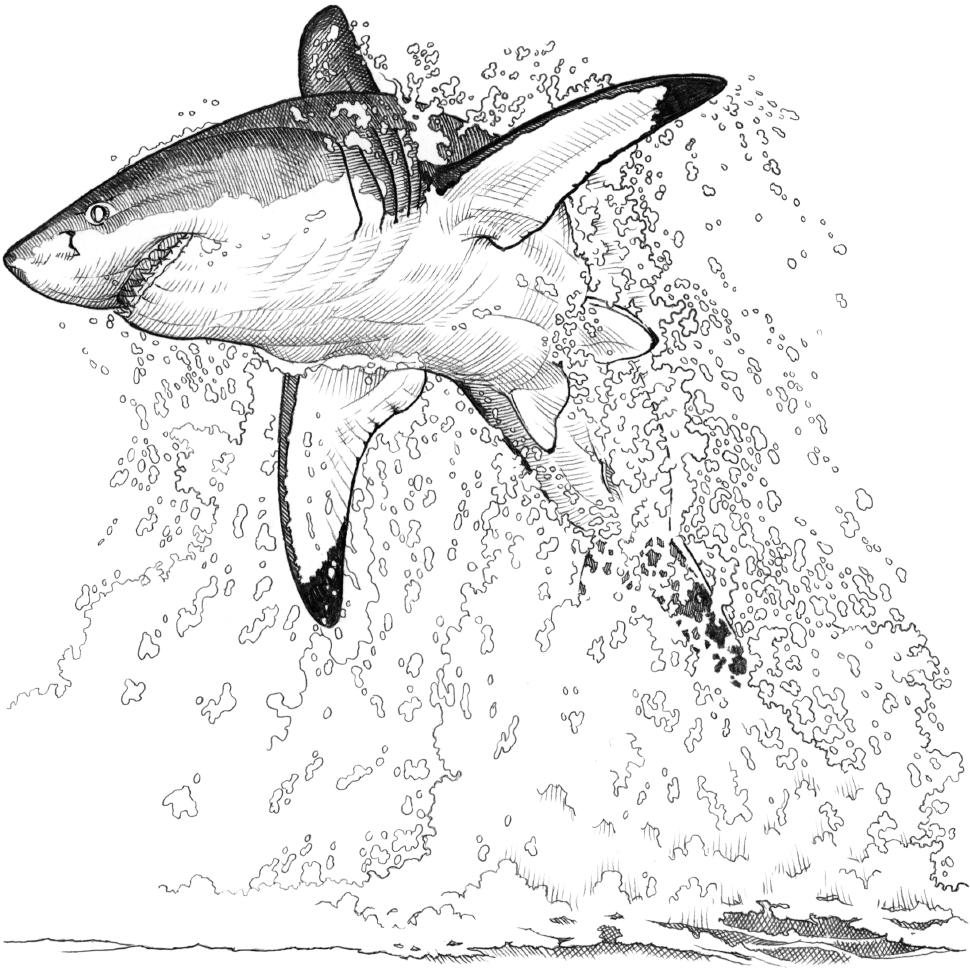
Both juvenile and adult White Sharks are known to leap, and this breaching behavior is surprisingly complex, involving different patterns of initial and follow-up strikes in which the shark may not completely leave the water. Polaris breaches, for example, may take the shark 10 ft (3 m) out of the water. When a shark misses its seal target, it may turn its head midair, perhaps keeping its eye on the prey for a potential do-over. Most strikes in False Bay occur within two hours of sunrise, when the murky water may limit the prey’s
ability to detect the countershaded shark from above but does not hinder the White Shark, which can see in low-light conditions, from sensing its potential prey from beneath.
“Air Jaws” showcases a remarkable set of behaviors made possible by the specialized, high-performance metabolic machinery of these elegant super-predators, which allows them to generate the additional muscle power needed to achieve the speed required to launch themselves. Other sharks also exhibit exciting aerial feats, which are discussed under “Jumping Sharks,” but those of White Sharks are the stuff of legends.
American Elasmobranch Society
If you are a North American shark scientist, you very likely already belong to this group. If you plan on being one, you should join. The American Elasmobranch Society (AES) was founded in 1983 as a nonprofit organization that seeks to advance the scientific study of living and fossil sharks, skates, rays, and chimaeras, and the promotion of education, conservation, and wise utilization of natural resources. AES holds annual meetings and makes abstracts (short summaries) from the presentations at these meetings available to members. These abstracts, plus the membership directory, are invaluable to students seeking to find opportunities in shark science. AES was the first of its kind. Since its inception, similarly focused scientific societies have arisen in other regions, notably Oceania, Europe, and Brazil.
Art Depicting Sharks
Of the myriad pieces of Western art in which sharks are featured, two paintings have always stood out: Winslow Homer’s The Gulfstream (1899) and John Singleton Copley’s Watson and the Shark (1778). Neither, however, presents sharks favorably, which is common in most artwork on sharks until very recently. Rather than embarrass myself with an amateurish artistic interpretation, I’ll leave it to you to search for these, and the fascinating stories behind them, online or—better yet by visiting the galleries, seeing the pieces in their extraordinary majesty in person, and interpreting them yourself.
Sharks in older art, at least in Western culture, almost always have been portrayed as predators with a rapacious appetite for human flesh. Shipwreck disasters in which voracious sharks menace survivors, some of which are at least partially accurate accounts, are well represented. Consider the cover art in the French newspaper Le Petit Parisien depicting survivors from the schooner Tahitienne, a victim of a Pacific Ocean storm, rebuffing a swarm (hundreds, according to one published account) of sharks that ultimately ate nine of the eleven seamen. This type of art, even if it sensationalizes the situation and demonizes the sharks, often reflects the reality that oceanic sharks are mostly generalist, opportunistic predators for whom unfamiliar objects represent potential meals. Thus, the list of unusual items found in the digestive tracts of oceanic sharks: suits of armor, license plates, boots, wine bottles, fur coats, cans of green beans, and so on.
Another common theme in Western art is sharks attacking fishers, swimmers, and undersea divers. Artwork accompanying nineteenthand early twentieth-century newspaper articles is particularly intriguing, even entertaining (despite the tragic stories being told).
Depictions of sharks among indigenous peoples often reflect how they considered sharks variously as gods, predators, omens, symbols, and natural resources. More so than being portrayed as objects of fear, sharks have been represented reverentially, and in a more complicated, less reactionary way in native cultures, for example as spirit animals and in rituals. For more information, research Aumakua, family gods from Native Hawaiian culture, and the sea god Dakuwaqa, from Fijian mythology, both of which are prominent in drawings and carvings.
One final note: In 1991, artist Damien Hirst created a stir with his installation entitled The Physical Impossibility of Death in the Mind of Someone Living a 14 ft (4.3 m) dead Tiger Shark caught in Australia and bathed in a preservative in a glass display case. The display created a feeding frenzy among critics and the public, richly deserved in my opinion, about the questionable artistic value of the dead shark and the ethics of killing so splendid a beast for “art.”
Attacks and Bites
Let’s first distinguish between attacks and bites. You’d be mistaken in thinking this was a distinction without a difference: given a choice, you’d opt to be bitten, since bites typically cause minor injuries and are generally attributed to mistaken identity interactions.
Attacks, a word that many shark biologists think should be replaced with serious or fatal bites, typically are more injurious and may involve repeated bites. However, if a White Shark confuses you with a sea lion and mistakenly bites you, immediately recognizing that you do not taste like a sea lion and thus very likely abandoning you, you might quibble with this life-changing event being referred to as the innocuous-sounding bite.
In the case of mistaken-identity interactions, how do the offending sharks recognize that humans are not on their menu? Is there any overall evolutionary value to this on-the-spot assessment?
Sharks have an array of senses to locate prey, and most of the time they work exquisitely; they should, after a research-anddevelopment period of about 450 million years. But their senses sometimes are fooled. In murky coastal waters, Blacktip Sharks, which are streamlined, swift-swimming eaters of small schooling fish, sometimes apparently confuse human hands and feet with these fish —and bite. Almost instantaneously, taste receptors in the mouth report the mistake to the brain, which replies to the jaws with a signal roughly translated into: Blech! Spit it out! Now! It is unknown how often mistaken identity bites occur in the lives of sharks, but the evolutionary value seems clear, to prevent swallowing prey that may be poisonous: of low nutritive value, too hard, or otherwise potentially harmful to the shark.
Both bites and attacks are low-likelihood events afforded way too much attention by the media. Given enough time, however, lowlikelihood events happen. The city of Las Vegas, Nevada, would go bankrupt if gamblers rejected that point of view. Even after you enter the shark’s habitat like swimmers do at almost every beach, and in some rivers—in calf-deep water, you are safer than when you make toast, cross a street, take a shower, eat a modern diet, breathe, and so on. In the United States, air pollution causes as many as 200,000
premature deaths annually. Inhaling the dust emitted by tires and running shoes as they wear is a bigger risk to our health than sharks are. I personally know more people who have experienced direct lightning strikes than who have been bitten by a shark (and I am around people who work with sharks daily).
Globally, around one hundred or fewer unprovoked shark bites (or attacks) are reported annually, according to the Florida Museum of Natural History’s International Shark Attack File. It is far from clear that this number is increasing, as media hype would have you believe. If it is, explanations, none of which have been rigorously tested, include better reporting of interactions; increases in seawater temperatures associated with climate change, which may alter shark migration patterns; more people entering shark habitat; and impacts on shark prey from overfishing, habitat alteration, and so on.
On a somewhat serious note, as a field biologist who works at sea, often in bad weather, I am aware that the odds of being struck by lightning are increased at sea. I thus try to avoid thunderstorms while at work on the water, in part because I fear the sardonic headline that might result: Shark Biologist Validates Adage: Struck by Lightning!
On a slightly humorous note, several years ago, an uncorroborated meme circulated on the internet that you were more likely to be killed in the tropics by strikes from random coconut falls than by sharks. Being killed by an errant coconut may be one of the few risks less likely than shark bites, although no International Falling Coconut Database collects data on coconut strikes.
Common sense and good fortune are the best deterrents to getting bitten by a shark. When my students and I see sharks, our instinct is to swim toward them. However, do not try this yourself. Instead, calmly return to your boat or the shore and leave the water. And do not enter a school of small fish (sometimes called a “bait ball”), or other areas where sharks might be attracted, like near a fishing pier.
Finally, no shark biologist would be disappointed if the media declared a moratorium on shark-bite stories and instead focused on
the inherent and ecological value of sharks to their environment, and their conservation.
Batoids
Batoids, the skates and rays, are the closest rel- atives to the sharks, having separated from the shark evolutionary tree about 270 million years ago. From their cartilaginous skeletons to their claspers, batoids (members of the superorder Batoidea) exhibit all the defining characteristics of sharks, and are classified with sharks in the subclass Elasmobranchii.
Some shark biologists refer to batoids as pancake or flat sharks. Batoid biologists who feel slighted by this reference call their objects of study “magnificent shark pancakes of wonder,” and they lightheartedly disparage sharks as “sausage rays.”
Structurally, there are two main differences between the two groups. First, batoids are depressed (not emotionally, but rather in the sense of flattened), whereas most sharks are laterally compressed and more spindle-shaped. In sharks, the five to seven bilateral gill slits are in all cases located above, or dorsal to, the welldefined pectoral fins. In rays, the five gill slits (six in one species) are located on the underside of the body, below where the broadly expanded pectoral fins, which are more commonly called wings, are attached to the body.
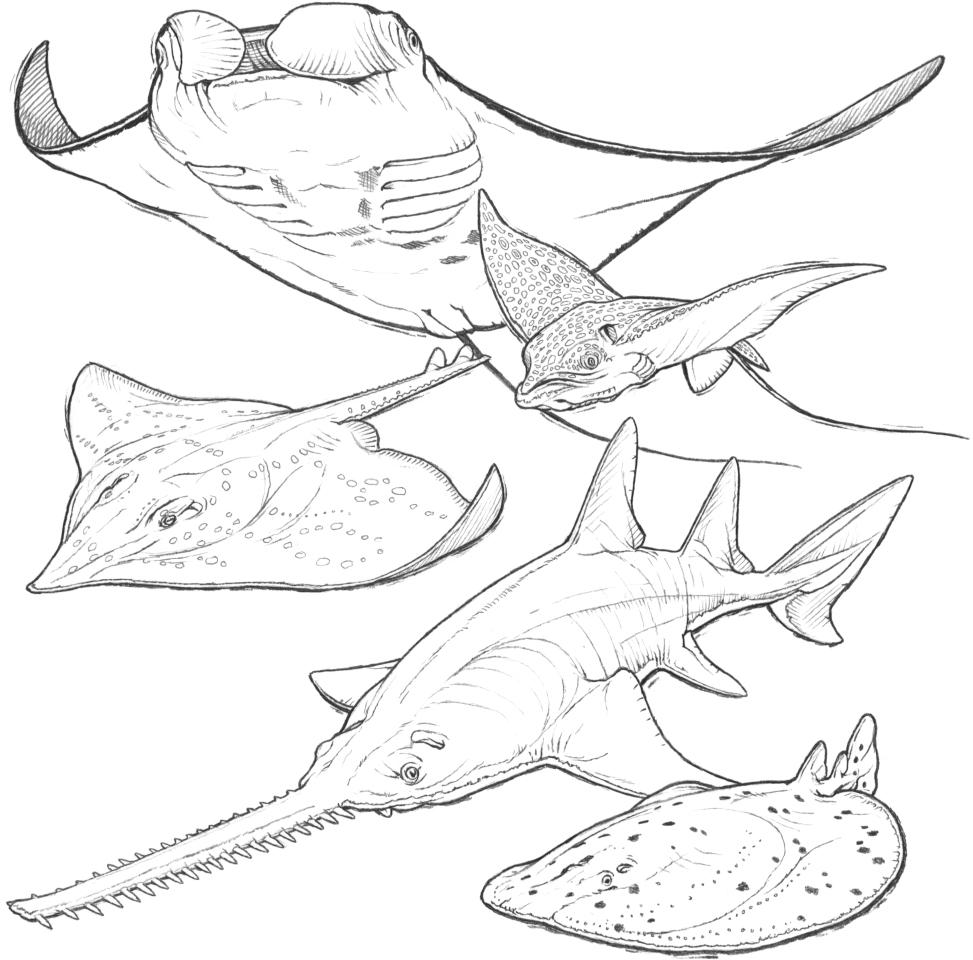
Over 650 of the approximately 1,250 extant species of elasmobranchs (sharks, skates, and rays) currently known to science are batoids. Iconic species include the sawfishes, mantas, stingrays, electric rays, and skates. Most batoids are benthic, coastal inhabitants, but there are pelagic and deep-sea forms as well. Most are durophagous (eat hard-bodied prey), but some are piscivorous (fish-eaters), and others planktivorous (plankton-eaters). Members of two families inhabit low-salinity, brackish waters or even fresh water, including the humongous Giant Ray of Cambodia’s Mekong River.
Many batoids are more threatened than sharks, according to the International Union for Conservation of Nature (better known as the IUCN), yet are afforded far fewer protections worldwide. Like sharks, rays have life history patterns that make them extremely vulnerable to overfishing and habitat destruction and alteration (especially for freshwater forms).
Bear Gulch
Bear Gulch sounds like a crippling disease of Grizzlies, as in, Poor animal—looks like a case of Bear Gulch. In actuality, it refers to the Bear Gulch limestone deposits in Montana and North Dakota, where layers of anoxic (devoid of oxygen) fine sediments, in which bacterial decomposition is limited, have exquisitely preserved remnants of an array of organisms from the Carboniferous period, about 323 million years ago. Bear Gulch was then a bay that existed for only about a thousand years. Within the approximately 90 ft (27 m) sediments, over sixty-five species of sharks, representing most of the biodiversity of the system, have been discovered. Among these was the eponymous Unicorn Shark, genus Falcatus, which possessed a large appendage on the head of males. One amazing find was a pair of Unicorn Shark fossils with a female grasping on to the male’s head clasper. No living shark exhibits a head clasper, but the ghost sharks, or chimaeras, a small group of about fifty cartilaginous, mostly deepwater species related to the sharks and rays, do.
Bear Gulch and the Cleveland Shale of Ohio represent rare discoveries that have played disproportionately large roles in helping paleontologists piece together the phylogeny (evolutionary history) of sharks and their relatives. Prior to unearthing these two fossil-rich locations, knowledge of the evolutionary history of sharks was quite sparse, since most cartilage, the main structure material of the shark skeleton, is not heavily mineralized and does not preserve well. In Bear Gulch and the Cleveland Shale, imprints of soft tissue were wellpreserved, providing unparalleled insight into the body types and ecological roles of sharks there.
Behavior
Sharks have long been considered laser-focused eating machines incapable of learning and with only primitive behaviors. While shark behaviors may not all be as sophisticated as those of many of their higher vertebrate cousins, some are surprisingly complex, and sharks can demonstrate impressive cognitive abilities.
The topic of behavior is wider than you might have envisioned. Among animals, there are numerous categories of behavior, including sexual, agonistic, social, as well as foraging (feeding), cognition (learning), predator avoidance, navigation, orientation, communication, and so on—and some of these overlap. While there are gaps, the literature on shark behavior is impressive, and is growing.
Let’s consider only a few of the vast array of behaviors in the shark repertory. When the Swell Shark, a relatively small, weak-bodied benthic shark, is threatened, it self-inflates by rapidly inhaling seawater into its stomach until it is almost twice its normal size. An erstwhile predator may now reconsider attacking the bloated Swell Shark because the formerly appetizing potential prey has now become super-sized, and it may appear to be more threat than nutrition. Swell indeed.
Behavioral adaptations associated with predator avoidance, especially in smaller species or juveniles, are also common. Numerous species, such as Sandbar, Blacktip, and Bull Sharks, utilize nurseries places that provide refuge, often from bigger sharks, and food for neonates (newborns) and juvenile sharks. Some benthic sharks, for example Horn Sharks, particularly juveniles, will hide in crevices. Others, like Pacific Angel Sharks, will bury themselves under the substrate, an action that also enables them to surprise their prey. Finally, many sharks will camouflage themselves, either through matching their backgrounds or countershading, and both may be used both to avoid predation and to conceal themselves from prey. In countershading, the upper surface is dark and the underside light. Viewed from below, a countershaded shark blends in with downwelling light, and from above, it matches the darkness of the depths.
A classic example of shark behavior is the agonistic (threat) displays of some requiem sharks, notably Grey Reef Sharks and Bull Sharks. When threatened by approaching divers, these sharks will depress their pectoral fins, arch their back, open their mouth, and stiffen their body while slowing their movement. White Sharks may behave similarly when threatened, and, being White Sharks, one-up Grey Reef and Bull Sharks by adding another dimension: convulsive, whole-body shuddering. Sharks exhibiting this behavioral suite are trying to communicate a simple message: leave or experience the wrath of my sharp teeth. Cornering a shark in full threat display is a potentially dangerous activity.
Studies have also shown that sharks are capable of learning. A 2022 review of the subject asserted, perhaps surprisingly, that
cognition in sharks and rays was comparable with that of most other vertebrates, even birds and mammals. As with many studies of sharks, only those species that adapt well to captivity, especially in the small confines of laboratories for example horn sharks and some carpet sharks and catsharks—have been studied, which has limited a broader understanding of learning across the group.
Mating in sharks is often violent, with males biting females or otherwise harassing them prior to copulation. In cases where there are large numbers of males competing for individual females, females have evolved ways to rebuff the libidinous hordes, or at least to discourage the advances of most of their “suitors.” In their classic study, Wes Pratt and Jeff Carrier found that female Nurse Sharks escaped to the shallows, where in large congregations they were able to reject the advances of more than 90 percent of males. Peter Klimley, who studied large, mostly female, schools of Scalloped Hammerheads around the El Bajo Seamount near Mexico’s Espíritu Santo Island in the Gulf of California, proposed that some females exhibited a suite of aggressive, acrobatic behaviors, such as corkscrewing, that endowed them with dominance, forcing the subordinate females to the edge of their school, and rewarding the dominant females with the front row seats of the mating arena, so to speak. Male Scalloped Hammerheads, who displayed their own behavior repertory that included the torso thrust, subsequently attracted and mated with the dominant females.
A few final points are worth mentioning. At least some sharks (for example, juvenile Lemon Sharks) are capable of recognizing familiar individuals of the same species, and some have also been shown to have an array of personalities, for example shyness and boldness. Port Jackson Sharks, which have been disproportionately studied because of how well they adapt to captivity, recognized jazz music and associated it with a food reward. Alas, their ear for music had limitations: they were incapable of distinguishing between jazz and blues. Dilettantes!
Bimini Biological Field Station
Pound for pound (0.45 kilogram per 0.45 kilogram, as it were), the diminutive Bimini Biological Field Station, known as “Shark Lab” to friends and local Bahamians, is among the most highly productive and important centers of tropical shark research and education globally. The lab has conducted the world’s most extensive research on the ecology, behavior, life history, and physiology of the Lemon Shark, which utilizes the shorelines, the mangrove-lined lagoons, and the nearby waters from cradle to grave (although not continuously). The lab has also made contributions on other sharks, including Tiger Sharks, Bull Sharks, Great Hammerheads, and Caribbean Reef Sharks, as well as rays. The facility was founded by legendary shark biologist Samuel “Sonny” Gruber in 1990 on the westernmost island of The Bahamas, and the field station has remained active since then.
Bimini represents a hotspot for shark biodiversity, owing to its wide array of habitats and ideal location as an oasis between the deep Gulf Stream and shallow Great Bahama Bank. The lab has hosted my Coastal Carolina University Biology of Sharks course there annually since 1996, and they also offer volunteer opportunities, internships, and naturalist courses.
Biodiversity Hotspots
“Biodiversity contains the accumulated wisdom of nature and the key to its future,” wrote environmental scientist Donella Meadows in 1990. Biodiversity generally refers to the variety of species and their population sizes in a specific ecosystem or even the entire biosphere. Ecologists calculate biodiversity indices for many ecosystems and these are then used to assess their current health or to serve as a baseline to monitor their future health. Low biodiversity is not necessarily a bad thing if the ecosystem characterized as such naturally has a low variety of species, for example the Baltic Sea (which also happens to be heavily impacted by humans).
As mostly mid-level and top predators, sharks play pivotal roles in maintaining the biodiversity of ecosystems in which they reside. They are thought to do so, like all top predators, by influencing the evolution of their prey and other organisms beneath them in the food
chain, and by controlling the population sizes of these organisms, although experimental verification of these roles in sharks is sparse.
Global shark biodiversity hotspots based on species richness (the number of species) include the east and west coasts of Australia (more than 170 species), Japan, southeast Africa, Taiwan, southern Brazil, and the Southeastern United States. Within these locales, biodiversity peaks over the continental shelves—typically productive, shallow areas adjacent to continents, with abundant habitat, forage stock, and favorable environmental conditions. Other shark hotspots are regions where cold, nutrient-rich, deep water upwells to the surface, as well as seamounts—undersea oases consisting of mountains that do not breach the surface. At the Port de Pêche outdoor fish market in Casablanca, Morocco, amid a huge fleet of colorful vessels that fished near the Canary Current (an upwelling zone off northwest Africa), I found juvenile and/or adults of several different sharks for sale, including Scalloped Hammerheads, Shortfin Makos, Small-spotted Catsharks, Blue Sharks, and Gulper Sharks (and I was detained and nearly arrested, twice, for performing street dissections of some of these sharks for my students and curious local residents).
Low biodiversity ecosystems (notspots?) are the open ocean particularly in the mid-latitudes (between 25° and 40°) in both hemispheres and polar seas, areas of lower biological productivity. Don’t confuse low biodiversity with a lack of biological value (my pun above notwithstanding); these areas constitute functional ecosystems that contribute to the planet’s overall biodiversity, and they serve as habitat for a small but ecologically important assemblage of sharks.
One area merits further mention, the Indo-Pacific’s Coral Triangle, which covers about 2.2 million square miles (5.7 million square kilometers). Approximately 30 percent of all named shark and ray species call this area home, and its habitats include coral reefs, mangroves, and seagrass beds. Here, as in general, sharks face challenges from climate change, overfishing, and other human impacts.
Biomedical and Other Uses/Biomimicry
Sharks and their close relatives have been used by humans for over five thousand years, for food, in biomedicine, as inspiration for design, for display in aquariums, as ecotourism draws, and for a variety of shark-derived products.
One biomedical area in which sharks have been misused is as treatment for cancer. It may surprise you to learn that virtually all multicellular animal groups, from insects to whales, experience cancer. Sharks belong on this list; the idea that sharks are alone among vertebrate animals in being cancer-free is unsupported by data. Regardless of whether sharks are protected from cancer, however, there is something special about their primitive but powerful immune system that could have human clinical relevance in fighting infections and diseases.
Other biomedical uses for shark tissues include skin grafts (and wound dressing), antibacterial coverings, antibiotic and antiviral agents, bone regeneration, therapy for neurodegenerative disorders and arthritis, medical creams, and as models for biomedical research. Shark cartilage is widely used as a health supplement, although benefits are not always supported by science. You can purchase cartilage pills, often labeled as chondroitin, which is sourced from sharks (mostly Blue Sharks), but more so from cows or pigs.
Sharks also inspire designers. Copying nature’s best ideas for human uses is called biomimicry. Biomimetic uses of sharks include Speedo’s Fastskin Swimsuit, based on the drag-reducing shapes of shark scales. These same shark scales create a texture that apparently inhibits attachment and proliferation of bacteria, and surfaces based on these scales are being developed for biomedical use. Shark swimming, and particularly the roles of fins, is being studied as a model for hulls and submersibles. And let us not forget the 1961 Mako Shark Corvette, inspired by mackerel sharks.
In addition to providing meat and fins for human consumption, sharks are caught for their liver, skin (known as shagreen), teeth and jaws, and other body parts. Shark liver oil, from the largest organ in sharks, is used as a lubricant in the textile industry, in cosmetics and health products, as fuel oil for lamps, and to protect boat hulls. When
supplies of cod liver oil, a major vitamin A source, were cut off during World War II, shark liver oil replaced it until synthetic vitamin A was manufactured in the early 1950s. Other products from sharks and batoids include gill rakers from mantas, rostra from sawfish, and intact, preserved neonate sharks or embryos sold as curios.
Bite Force
Assumptions are ideas that we take for granted, without verification. So it is that most of us assume that the bite force of sharks is among the most powerful in the animal kingdom. Evolution doesn’t waste its breath, which means that the force of shark bites is no more than is needed for grasping or crushing prey or penetrating skin and removing chunks of flesh, and these forces may or may not be as high as expected. Also, in the evolution of feeding, tooth morphology that is, size and shape works hand in hand with bite force to achieve the desired end: feeding.
The first scientific study of bite force in sharks, conducted in the late 1960s on adult Tiger Sharks and others in pens in Bimini, The Bahamas, found that the highest force from a single tooth was 132 lb (60 kg). If you assumed that this force applied to every functional tooth in the Tiger Shark’s jaws, the total bite force would exceed three tons.
Durophagous sharks—that is, those that eat hard prey and typically possess hypertrophied jaw musculature and teeth adapted for crushing and grinding—tell a more nuanced story. The bite force of the anterior teeth of a small (3.5 lb or 1.6 kg) Horn Shark was only 26.3 lb (11.9 kg), but maximum bite force on the posterior molariform teeth was 76 lb (34.5 kg). Pound for pound, however, these are among the highest bite forces found in sharks.
The highest bite force measured in a shark was from a 423 lb (102 kg) Bull Shark, at 478 lb (217 kg), higher than that of a slightly larger White Shark. Surprisingly, perhaps, the second molar of a 154 lb (70 kg) human was close to that of the White Shark, at 292 lb (132 kg). We’re gonna need a bigger car!
Bloodhounds of the Ocean
Sharks have acquired numerous epithets, of which the most common is “maneater,” but two also frequently used are “bloodhounds of the ocean” and “swimming noses.” These refer to the putative ability of sharks to detect vanishingly small odors, especially those associated with blood, in their environment.
There is some truth to the claim, although qualification is needed. I’ve seen swimmers hasten to exit from the water after a drop of blood escaped from a cut, as if every shark in the surrounding ocean instantaneously detected the red fluid and engaged its afterburners to jet to the future victim’s minor injury. Detecting a scent requires that a sufficient number of specific molecules from a source capable of stimulating the shark’s olfactory (odor) receptors physically contact these receptors. Thus, unless you were unlucky enough to drip blood directly into the nostrils of a shark lurking uncomfortably close to you, there would be no urgency to react like you were running from Godzilla.
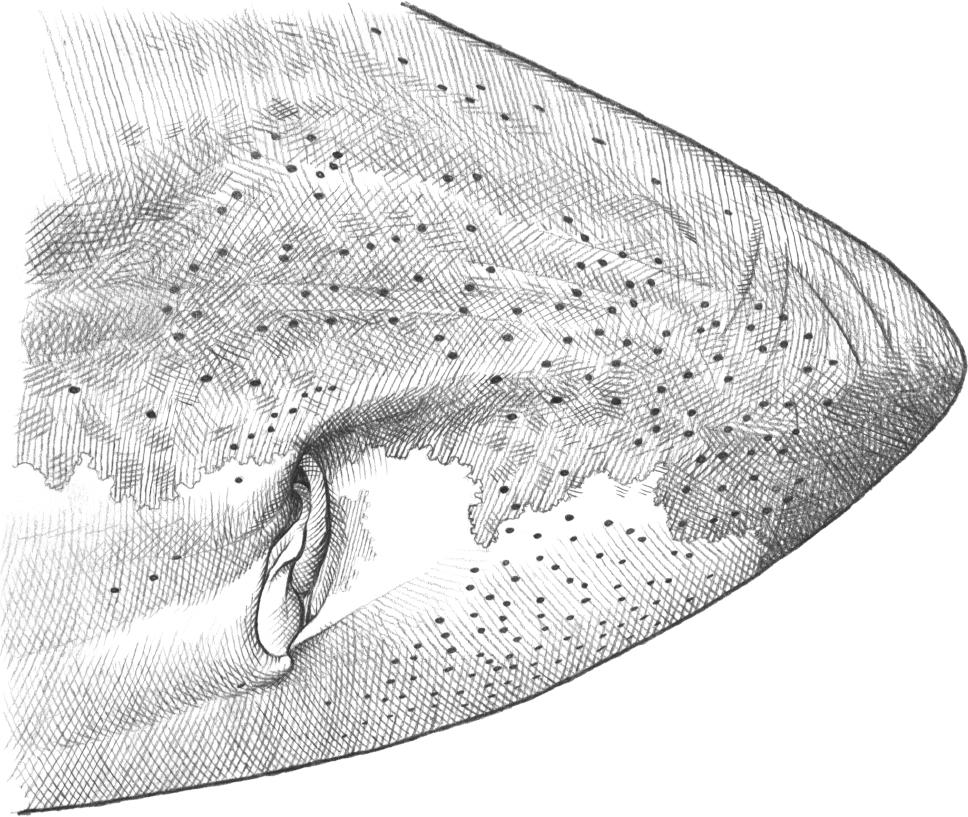
Now for the qualification. Sharks indeed have a prodigious sense of smell and are especially responsive to the odors of their prey. Some have even been shown to smell the difference between prey fish that have been agitated and those that are unstressed. Many sharks have a remarkable ability to track an odor corridor to its source at distances of 0.6 mi (1 km) or more. However, while this ability varies among sharks, many bony fishes have similar sensitivities, so if some sharks are bloodhounds of the ocean, so too are some bony fishes.
Blue Water, White Death
For shark enthusiasts before the early 1970s, documentaries featuring spectacular footage of sharks were sparse. Blue Water,
